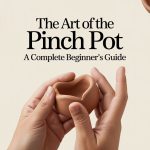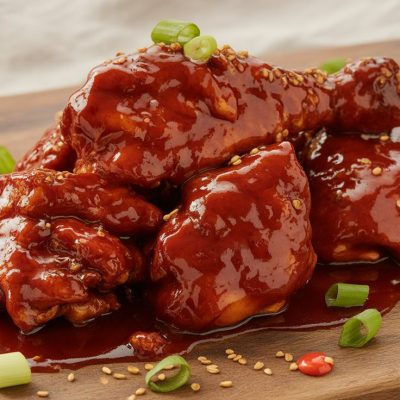There’s something magical about a steaming bowl of pasta, especially when it’s tossed with tender shrimp and a silky sauce that clings to every strand of linguine. Shrimp linguine isn’t just a dish—it’s an experience that brings together the ocean’s freshness and the warmth of homemade comfort food. Whether you’re cooking for a family dinner, a romantic date night, or simply indulging yourself, this dish never disappoints.
In this article, we’ll dive deep into everything you need to know about shrimp linguine—its history, ingredients, cooking methods, variations, and expert tips to help you create restaurant-quality pasta right in your kitchen. Let’s get started!
What Is Shrimp Linguine?
Shrimp linguine is a pasta dish featuring linguine noodles—a flat, slightly narrow type of pasta—combined with shrimp, garlic, olive oil, and often a light sauce made from butter, wine, cream, or tomatoes. It’s a classic Italian-inspired meal that balances richness and freshness.
Unlike heavier pasta dishes, shrimp linguine feels light yet satisfying, offering the perfect mix of texture and flavor. The shrimp provides protein and a mild sweetness, while the linguine soaks up every drop of sauce, making each bite deliciously cohesive.
The Origins of Linguine and Its Italian Charm
Linguine, meaning “little tongues” in Italian, originated in Liguria, a coastal region in northern Italy. It’s traditionally served with seafood, reflecting the Mediterranean lifestyle where the sea’s bounty meets fresh herbs and olive oil.
When shrimp was introduced to Italian-inspired dishes outside of Italy—especially in coastal areas of America—the shrimp linguine combination quickly became a favorite. It represents the best of both worlds: the simplicity of Italian cooking and the freshness of seafood cuisine.
Why Shrimp Linguine Wins Every Time
Why does this dish stand out among countless pasta recipes? Simple—it checks every box for a perfect meal:
-
Quick to prepare: You can have it ready in under 30 minutes.
-
Balanced flavors: The savory garlic, buttery sauce, and sweet shrimp create harmony.
-
Versatile: Pairs beautifully with wine, salad, or even crusty bread.
-
Elegant yet easy: Looks gourmet but requires basic cooking skills.
In short, shrimp linguine is the kind of meal that feels fancy without the fuss—a restaurant-level dish made right at home.
Essential Ingredients for Shrimp Linguine
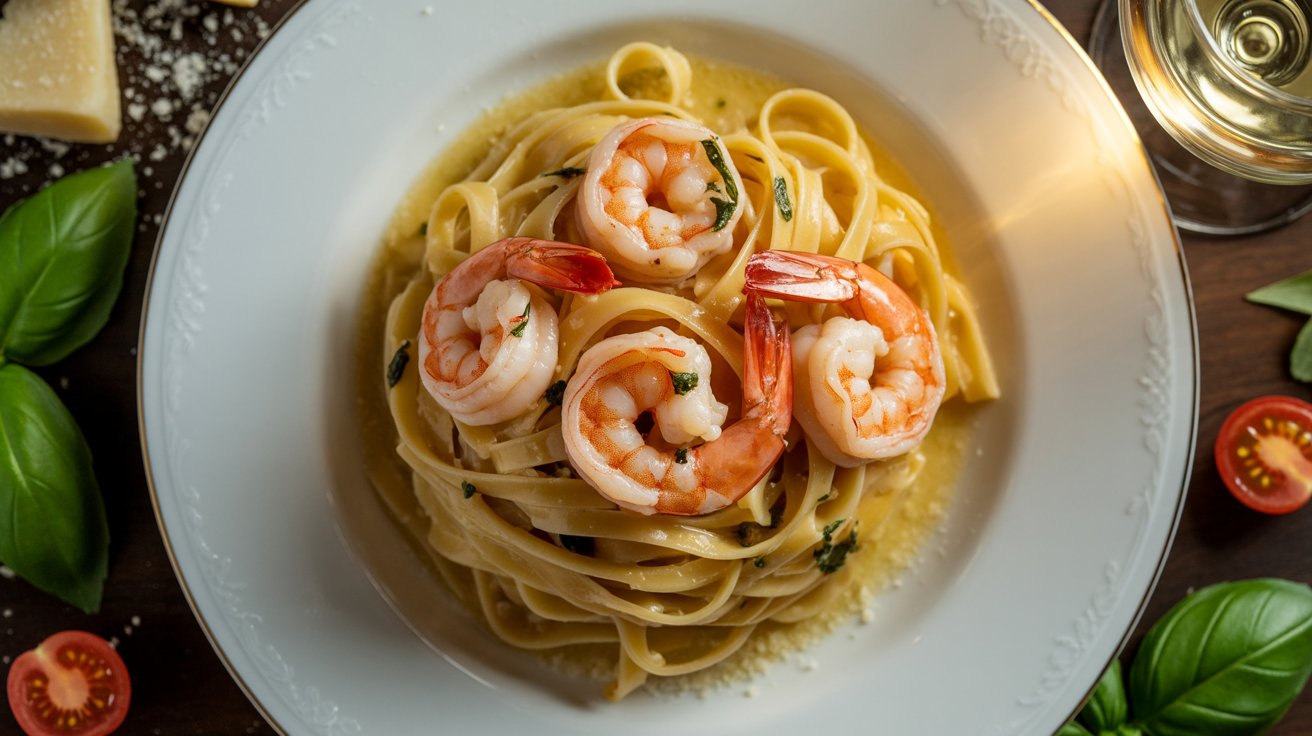
Every great dish starts with quality ingredients. Here’s what you’ll need to make a mouthwatering shrimp linguine:
1. Linguine Pasta
Opt for high-quality durum wheat linguine. Fresh or dried, both work, but dried pasta holds up better in creamy sauces.
2. Shrimp
Use medium or large shrimp—peeled, deveined, and tail-off for easier eating. Fresh shrimp gives the best flavor, but frozen works well too when properly thawed.
3. Garlic
The soul of the dish. Use fresh garlic cloves—never powder—to infuse the oil or butter with depth and aroma.
4. Olive Oil and Butter
A blend of these creates a luscious base for sautéing the shrimp and building the sauce.
5. White Wine or Lemon Juice
It brings a touch of acidity and freshness that perfectly cuts through and balances the sauce’s rich flavors.
6. Cream or Tomatoes (Optional)
Depending on your preference, you can go for a creamy shrimp linguine or a tomato-based version.
7. Herbs and Seasonings
Fresh parsley, basil, crushed red pepper, salt, and black pepper elevate the overall flavor.
Step-by-Step: How to Make Shrimp Linguine
Step 1: Cook the Linguine
Bring a pot of salted water to a rolling boil, then cook the linguine just until it reaches that perfect al dente texture—tender with a slight bite. Reserve about one cup of the pasta water—it’s gold for adjusting your sauce’s consistency later.
Step 2: Sauté the Shrimp
In a skillet, heat olive oil and a bit of butter. Add minced garlic and cook for 30 seconds before tossing in the shrimp. Cook until pink—about 2 minutes per side—then remove and set aside.
Step 3: Build the Sauce
In the same pan, deglaze with white wine or lemon juice. Add cream or crushed tomatoes depending on your chosen style. Stir gently as the sauce thickens.
Step 4: Combine Everything
Add the cooked linguine and shrimp back to the pan. Toss everything together, letting the pasta absorb the sauce. Pour in a small amount of the reserved pasta water to loosen and blend the sauce, if necessary.
Step 5: Finish and Serve
Garnish with fresh herbs, grated Parmesan, and a squeeze of lemon. Serve immediately while hot.
Variations of Shrimp Linguine to Try
1. Creamy Garlic Shrimp Linguine
A luxurious version with heavy cream, butter, and Parmesan cheese. It’s rich, smooth, and perfect for special occasions.
2. Shrimp Linguine with Lemon and Herbs
Bright and refreshing, this variation skips the cream and relies on olive oil, lemon juice, and herbs for flavor. Ideal for a light summer meal.
3. Spicy Shrimp Linguine (Fra Diavolo Style)
Add chili flakes or diced jalapeños to bring a fiery kick. Pairs wonderfully with tomato-based sauce.
4. Shrimp and Spinach Linguine
A nutritious twist where wilted spinach adds both color and vitamins to your dish.
5. Shrimp Linguine with Pesto
Swap out traditional sauces for basil pesto for a nutty, aromatic delight.
Tips for Cooking Perfect Shrimp
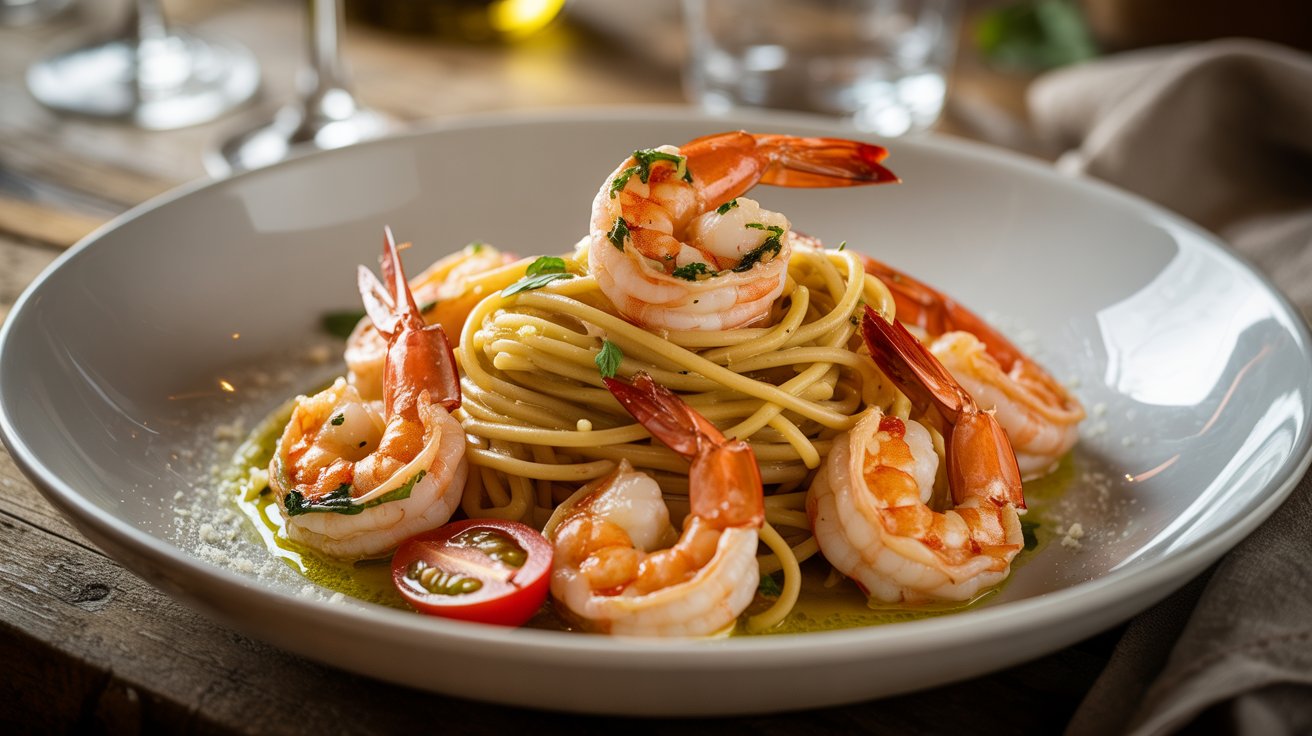
Shrimp cook quickly—and overcooking can ruin their texture. Keep these tips in mind:
-
Don’t overcrowd the pan. Shrimp should be in a single layer.
-
Cook until just pink. Any longer and they’ll turn rubbery.
-
Use raw shrimp instead of precooked. It ensures better flavor absorption.
-
Marinate lightly. A simple mix of lemon juice, garlic, and olive oil enhances the taste without overpowering.
Think of shrimp as the “butterflies of the sea”—delicate and beautiful, but easy to mishandle if you’re not gentle.
Making Shrimp Linguine Healthier
Love shrimp linguine but watching your calories? Try these adjustments:
-
Use whole-grain linguine for added fiber.
-
Swap heavy cream for Greek yogurt or coconut milk.
-
Cut down on butter; rely on olive oil instead.
-
Add zucchini noodles or mix with spinach for extra nutrients.
Healthy eating doesn’t mean giving up on taste—it’s just about smarter choices.
Pairing Shrimp Linguine with Wine and Sides
A dish this elegant deserves the right companions.
-
Wine pairing: Sauvignon Blanc, Pinot Grigio, or Chardonnay all complement the delicate flavors.
-
Side dishes: Garlic bread, Caesar salad, or roasted vegetables make excellent partners.
-
Dessert idea: Finish with lemon sorbet or panna cotta for a refreshing end.
Common Mistakes to Avoid
Even simple dishes have pitfalls. Here’s what to watch out for:
-
Overcooking pasta: Always stop at al dente—it continues to cook in the sauce.
-
Too much sauce: The goal is to coat, not drown, the pasta.
-
Skipping the pasta water: It’s essential for creating a smooth, cohesive sauce.
-
Neglecting to season properly: Taste as you go to balance salt and acidity.
Cooking shrimp linguine is like painting—a balance between bold strokes and delicate details creates the masterpiece.
Leftover Storage and Reheating Tips
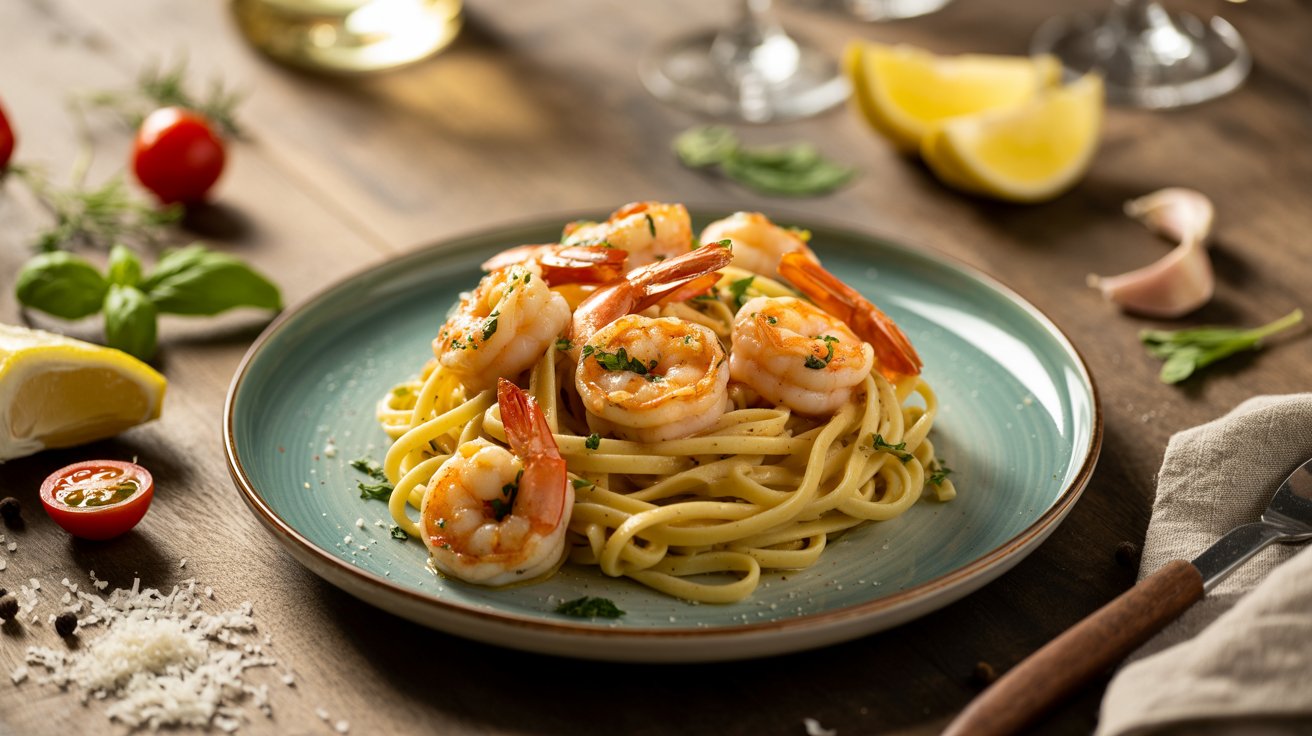
Shrimp linguine tastes best fresh, but leftovers can still shine:
-
Refrigerate in an airtight container for up to 2 days.
-
Reheat gently on the stove over low heat with a splash of water or broth to revive the sauce.
-
Avoid microwaving shrimp too long—it can toughen quickly.
Cultural and Modern Takes on Shrimp Linguine
From fine dining restaurants to cozy home kitchens, shrimp linguine has adapted across cultures. In America, chefs often add a creamy touch, while in Mediterranean regions, it’s kept light with olive oil and lemon.
Modern twists include gluten-free pasta, vegan shrimp substitutes, and plant-based sauces—showing how this timeless dish continues to evolve without losing its soul.
FAQs About Shrimp Linguine
1. Is it okay to use frozen shrimp when making shrimp linguine?
Yes, you can! Just make sure to thaw them completely and pat them dry before cooking to prevent excess water in the sauce.
2. What’s the best type of pasta to substitute for linguine?
Fettuccine, spaghetti, or tagliatelle work well as alternatives if linguine isn’t available.
3. Can I make shrimp linguine without wine?
Absolutely. Substitute white wine with vegetable or chicken broth and a splash of lemon juice for similar acidity.
4. What’s the best way to keep the shrimp tender and prevent it from turning rubbery?
Avoid overcooking—shrimp are done as soon as they turn pink and opaque. Cooking each side for about 2 minutes is usually enough.
5. Is shrimp linguine suitable for meal prep?
It’s best enjoyed fresh, but you can store it for up to 2 days. To meal prep, cook the pasta and shrimp separately and combine just before eating.
Conclusion
Shrimp linguine is more than just a recipe—it’s a celebration of simplicity, flavor, and connection. With every twirl of pasta, you experience a balance of creamy, zesty, and savory notes that feel both comforting and sophisticated.
Whether you stick to the classic version or create your own twist, this dish proves that great food doesn’t have to be complicated—it just needs passion and a touch of creativity.




